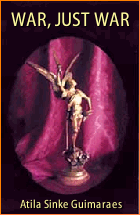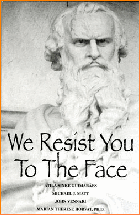Theology of History
 |
 |
 |
 |
 |
 |
 |
The Judgment of Nations - X
Bl. Francisco Palau,
a Counter-Revolutionary Prophet
One of the most interesting – and lesser known – prophets of the 19th century is a Catalonian discalced Carmelite priest, Blessed Francisco Palau (1811-1872). He was a missionary preacher and founder of the Congregation of Carmelite Brothers and Nuns on the Baleares Islands. He was extremely polemical, fighting the anti-clerical Liberal Revolution in Spain that erupted in the 19th century; for this resistance he was exiled twice from his country. He was one of the greatest exorcists of all History.
 He was also a prophet who, in his solitary life in caves during his exiles, foresaw the great crisis in the Church that had begun with Protestantism, accelerated with the French Revolution, and was already generating the Communism of the Paris Commune of his day. He saw that these various revolutions were one, and that their head was the Devil, and that it would almost destroy the Church and Christianity in the future. As punishment for man’s infidelity, God would send a horrible chastisement, worse than the Deluge.
He was also a prophet who, in his solitary life in caves during his exiles, foresaw the great crisis in the Church that had begun with Protestantism, accelerated with the French Revolution, and was already generating the Communism of the Paris Commune of his day. He saw that these various revolutions were one, and that their head was the Devil, and that it would almost destroy the Church and Christianity in the future. As punishment for man’s infidelity, God would send a horrible chastisement, worse than the Deluge.
But Blessed Palau also announced the final and ultimate defeat of the Revolution in a battle led by a great Restorer. Then would come a time of peace with a brilliant restoration of both the Church and society, and Christ would reign over the whole Earth. Man would give Him due glory as never before since the beginning of History.
Thus we find in the prophecies of this great Spanish hermit that same points set forth in the other articles of this series titled The Judgment of Nations, which is confirmed in Scriptures, a Judgment that will be a great chastisement God will send upon all mankind, to be followed by a period of peace and the complete restoration of the Holy Church.
Further, as we have seen in all the other Latter Time prophecies examined in this series, that restoration will be led by a providential man – the “Innocent One” described by St. Hildegard von Bingen, the Restorer seen by Bl. Anna Maria Taigi, the Great Leader foretold by Ven. Bartholomew Holzhauser, and the “Moses of the Law of Grace” of whom Bl. Francisco Palau speaks.
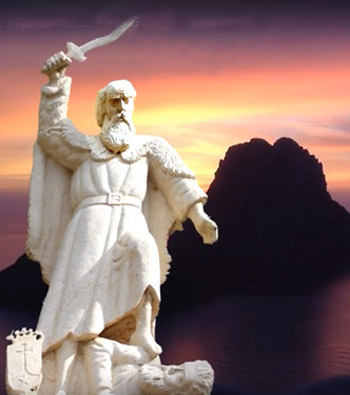 That man, like Bl. Palau himself, would be greatly persecuted even by Catholics, but he will have the mission to direct the future Restoration and establish the Reign of Mary.
That man, like Bl. Palau himself, would be greatly persecuted even by Catholics, but he will have the mission to direct the future Restoration and establish the Reign of Mary.
“What will impede the appearance of this extraordinary mission?” Bl. Palau asks in his counter-revolution newspaper titled The Hermit that he wrote to alert Spaniards to the revolution in the Church and society. “Nothing,” he responds, “for the needs of the Church will clamor for a mission like that of Elias and Moses … as announced by CONSTANT TRADITION OF ALL THE CHURCH FATHERS AND DOCTORS. (his emphasis). (1)
Bl. Palau gave to that future Leader the name of “Moses of the law of Grace” because he would be the providential man who will lead the People of God of the New Alliance who would be held captive by the Revolution to the Promised Land of the Reign of Mary. (2)
The gaze and spirit of a prophet
Prof. Plinio Corrêa de Oliveira describes the gaze and spirit of this great counter-revolutionary who appears before us on the page like a prophet of the desert:
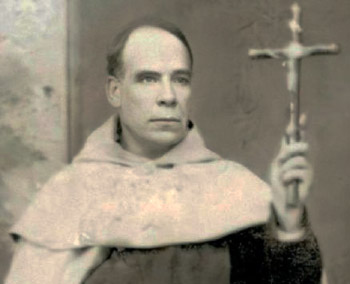 "He gives me the impression of a deeply serious and very self-confident person, with great inner stability. He has the stability of the Saints. He is a man of great reflection and has arrived at conclusions that have stablized his spirit on immovable certainties, like an island is rooted at the bottom of the sea. Consequently, he is very firm in the Faith and in the conclusions that theology draws from the Faith.
"He gives me the impression of a deeply serious and very self-confident person, with great inner stability. He has the stability of the Saints. He is a man of great reflection and has arrived at conclusions that have stablized his spirit on immovable certainties, like an island is rooted at the bottom of the sea. Consequently, he is very firm in the Faith and in the conclusions that theology draws from the Faith.
"He is also very sure of the authenticity of the mystical phenomena he experiences. His physiognomy gives the impression of firmness, but also a great serenity. He has no contractions, no vibrations. Everything in him is firmness.”
That firmness, Prof. Plinio goes on to note, expresses that he has taken a firm stand against the evil of his days. After long meditations on what he should love and what he should hate, he has resolved to fight and destroy the evil and error:
“As his gaze broadened with age, so did his love for the verum, the bonum and the pulchrum, and his rejection of the contrary. He contemplated the Devil and his legions setting out to attack the Church and Christian Civilization. He measured all the infamy of this attack and all the sublimity of what was being attacked. With that calmness that characterized him, he measured the enormous battle that awaited him. And he threw himself into the fray, sure of victory."
Prof. Plinio ends his analysis by noting that he has never seen a more counter-revolutionary spirit than that of Blessed Palau, a man “who seems to be even more firm than Charlemagne.” A study of Blessed Palau will serve to give us an idea of what the Reign of Mary will be like, he concludes. Thus, I enter here into a very brief study of the life of this great missionary and prophet and some of his many prophecies for our times. (3)
His early life & signs of his mission
Francisco Palau y Quer was born on December 29, 1811, into a devout family in the village of Aytona in the prosperous region of Catalonia, Spain.
He entered life at a time of crisis and revolution that were shaking the very foundation of Christendom. Napoleon had invaded Spain and tried to implement at the point of a bayonet the false principles of the French Revolution. When, at last, the much-hated battered Napoleonic troops finally left Spain in 1814, they left behind them a devastated land.
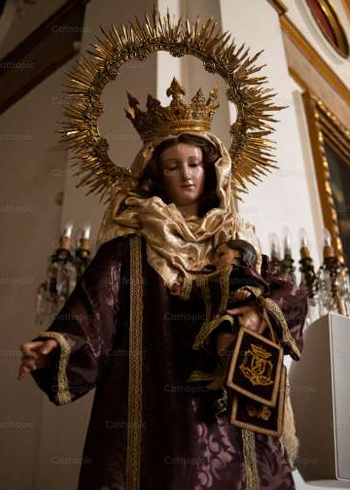 Since he was a child, Francisco had worked the land to help his father and brothers rebuild the paternal house and recover production of his lands. His keen intellectual qualities and piety pointed him toward a religious vocation. At age 17 he entered the seminary of Lérida, where he was formed in the theology of St. Thomas Aquinas.
Since he was a child, Francisco had worked the land to help his father and brothers rebuild the paternal house and recover production of his lands. His keen intellectual qualities and piety pointed him toward a religious vocation. At age 17 he entered the seminary of Lérida, where he was formed in the theology of St. Thomas Aquinas.
It was there that he decided to enter the Order of Carmel, but the rector of the seminary and his own parents opposed the idea. He resolved to pray a novena to the Prophet Elias, to whom he had been devoted since childhood. On the last day of the novena, the statue before which he was praying came to life and covered him with its mantle. He later recounted: “With such a clear sign, I did not hesitate for a moment to go to the desired Mount in the shadow of Carmel!”(4)
He entered the novitiate in Barcelona in 1832 and took his perpetual vows on November 15, 1833. He understood fully that his life would be in danger because of the strong persecution that the Liberal Revolution was already making against religion in his country.
The First Carlist War broke out in 1833 and lasted seven years. It was notably the largest most deadly war in 19th century Europe. Some estimates place each side as losing at least 50,000 men.
The Carlists were monarchists and fought to uphold the authority of the Church and to defend traditional Spanish values, regional privileges and customs; thus they wanted to install the more conservative Infante Carlos of Spain as King. The Liberals who fought for the constitutional State were anti-clercial and defended the revolutionary ideas in the name of progress and modernization; their champion was the then very young and liberal Queen Isabella.
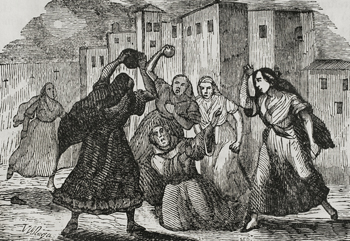 Indeed, on the night of July 25, 1835, a liberal riot broke out. Revolutionary groups incited the mobs to set fire to numerous monasteries and to kill religious throughout Spain. The Monastery of St. Joseph in Barcelona where Francisco
Palau was a deacon was burned to the ground, but Palau and some of his brothers managed to escape. But they were immediately caught and locked up in prisons, where they remained awaiting death.
Indeed, on the night of July 25, 1835, a liberal riot broke out. Revolutionary groups incited the mobs to set fire to numerous monasteries and to kill religious throughout Spain. The Monastery of St. Joseph in Barcelona where Francisco
Palau was a deacon was burned to the ground, but Palau and some of his brothers managed to escape. But they were immediately caught and locked up in prisons, where they remained awaiting death.
Blessed Palau regained his freedom but only to find himself on the street: the monasteries were closed, religious habits forbidden, and meetings with other religious outlawed.
He made a resolution and executed it straightway: He would imitate the founder of Carmel living as a hermit in a grotto in Aytona in the region of his birth in the mountains of Catalonia.
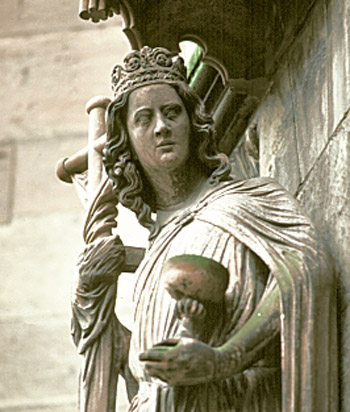 It was here that he completed his studies and found his “beloved” and made her defense his raison-d-etre:
It was here that he completed his studies and found his “beloved” and made her defense his raison-d-etre:
“I saw my beloved and united myself to her in faith, hope and love! Her presence satisfied my passion and with her I was happy, her beauty was enough for me. God and my neighbour – that is, the Catholic Church – appeared to me as beautiful as a divinity.” (5)
Later in his forced exiles in France and on the Ibiza Island in Spain, the Church would appear to him often under different figures: Rachel, Esther, Debora, Judith, and finally the Blessed Virgin. He would later write that the Virgin Mary is the only figure in Heaven who most perfectly represents the Holy Church.
Despite the government prohibition, Bl. Palau was ordained a priest on April 2, 1836, by the Bishop of Barbastro, who then appointed him assistant of the parish of Aytona, his hometown. His sermons were filled with ardor, logic and a decisive force of conviction. People crowded to hear them and then lined up at his confessional.
In 1837 the city of Berga became the center of the Carlist forces and Palau made his headquarters there, preaching Catholic dogma and sound morals and awakening Catholic enthusiasm for the cause throughout the rural regions of the area.
But the effectiveness of his preaching displeased the liberal authorities and Church Prelates who were cooperating with them, and persecutions soon arose.
There is the famous story included in every biography of the Hermit about the instance when he was set upon by three hired bandits as he prayed in his hermitage after a blessed day of mission. Upon seeing them, Bl. Palau was not intimidated; he called upon them to advance and asked them what they wanted. The most daring replied that they had come to kill him.
“Have you come to kill me, brother?” he replied to the murderer, who was taken aback in fear at his very presence. “It would be better for you to confess, for it has been 20 years since you last did so, and you do not know when God will call you to your Judgment. Come now and confess, my son."(6)
The murderer fell to his knees and confessed, and was soon followed by his companions.
The Hermit confronts a Carlist general
A lesser known story provides us with a sense of his prophetic spirit. In his solitary prayer, Our Lord and Our Lady often showed him the events of the present and future, and directed him to warn both secular and religious leaders of their errors. Here is one example:
It was the year 1838 and the First Carlist War was waging, One of the top Carlist generals, Charles d’Espagnac, known as the Count of Spain, was quartered with his troops in Berga. His soldiers were well known for their excesses and immoral behavior.
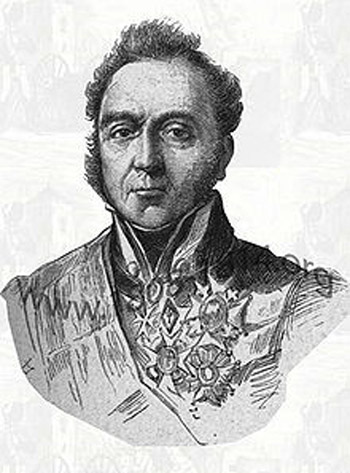 One day the 27-year-old Hermit presented himself before the Carlist general.
One day the 27-year-old Hermit presented himself before the Carlist general.
“Hermit, what brings you here?” the Count of Spain demanded.
“The Lord God of Armies,” responded Padre Palau, parodying the words of the prophet Elias to King Ahab.
“What news do you bring?”
“I am sent from Heaven, and my mission is to notify you that the cause of Don Carlos, which you defend, is lost. Fold up your banner, put away your sword and retire with your army to France.”
“Traitor!” exclaimed the indignant General.
Padre Palau replied calmly: ”Do not call the minister of peace that Heaven sends you a traitor. Receive this fatal announcement for you with humility and submission.”
“Explain yourself,” demanded the Count of Spain, who felt himself intimidated and in awe before this small man in a Carmelite habit.
Padre Palau continued with gravity: “You have written on your banner these words, ‘God and King!’ Your battle cry is ‘Viva la Religion!’ You have given battle. The Lord of Armies has judged your cause and has rejected you.”
“But why?”
“Because you invoke God and you blaspheme His name. You are a corrupted army. God does not favor your banner because you are not good Christians. And the Devil hates you because you shout ‘Viva la Religion!’ You have, therefore, both Heaven and Hell against you.”
The General was silent before this commanding figure and laid his head on the table, as if succumbing before the terrible pronouncements of the Hermit, who left as quickly as he had come. (7)
And, in fact, in 1839, the Count of Spain was assassinated by his own soldiers, who threw his body in the waters of the Segre River. Bl. Palau’s prophecy was fulfilled.
One year later the cause of Don Carlos was defeated and General Rámon Cabrero was forced to cross the Pyrenees with his soldiers. Among them was Padre Palau who would remain in exile there until 1851.
With this story we see the beginning of the prophetic role of Bl. Francisco Palau, who received missions from Heaven to rebuke kings, generals, bishops and priests. For this he was hated and persecuted his whole life.
Continued

Blessed Francisco Palau (1811-1872)
But Blessed Palau also announced the final and ultimate defeat of the Revolution in a battle led by a great Restorer. Then would come a time of peace with a brilliant restoration of both the Church and society, and Christ would reign over the whole Earth. Man would give Him due glory as never before since the beginning of History.
Thus we find in the prophecies of this great Spanish hermit that same points set forth in the other articles of this series titled The Judgment of Nations, which is confirmed in Scriptures, a Judgment that will be a great chastisement God will send upon all mankind, to be followed by a period of peace and the complete restoration of the Holy Church.
Further, as we have seen in all the other Latter Time prophecies examined in this series, that restoration will be led by a providential man – the “Innocent One” described by St. Hildegard von Bingen, the Restorer seen by Bl. Anna Maria Taigi, the Great Leader foretold by Ven. Bartholomew Holzhauser, and the “Moses of the Law of Grace” of whom Bl. Francisco Palau speaks.

He predicts a restorer figure like Elias for the Latter Times
“What will impede the appearance of this extraordinary mission?” Bl. Palau asks in his counter-revolution newspaper titled The Hermit that he wrote to alert Spaniards to the revolution in the Church and society. “Nothing,” he responds, “for the needs of the Church will clamor for a mission like that of Elias and Moses … as announced by CONSTANT TRADITION OF ALL THE CHURCH FATHERS AND DOCTORS. (his emphasis). (1)
Bl. Palau gave to that future Leader the name of “Moses of the law of Grace” because he would be the providential man who will lead the People of God of the New Alliance who would be held captive by the Revolution to the Promised Land of the Reign of Mary. (2)
The gaze and spirit of a prophet
Prof. Plinio Corrêa de Oliveira describes the gaze and spirit of this great counter-revolutionary who appears before us on the page like a prophet of the desert:

A gaze of a stable man with immovable certaintiess
"He is also very sure of the authenticity of the mystical phenomena he experiences. His physiognomy gives the impression of firmness, but also a great serenity. He has no contractions, no vibrations. Everything in him is firmness.”
That firmness, Prof. Plinio goes on to note, expresses that he has taken a firm stand against the evil of his days. After long meditations on what he should love and what he should hate, he has resolved to fight and destroy the evil and error:
“As his gaze broadened with age, so did his love for the verum, the bonum and the pulchrum, and his rejection of the contrary. He contemplated the Devil and his legions setting out to attack the Church and Christian Civilization. He measured all the infamy of this attack and all the sublimity of what was being attacked. With that calmness that characterized him, he measured the enormous battle that awaited him. And he threw himself into the fray, sure of victory."
Prof. Plinio ends his analysis by noting that he has never seen a more counter-revolutionary spirit than that of Blessed Palau, a man “who seems to be even more firm than Charlemagne.” A study of Blessed Palau will serve to give us an idea of what the Reign of Mary will be like, he concludes. Thus, I enter here into a very brief study of the life of this great missionary and prophet and some of his many prophecies for our times. (3)
His early life & signs of his mission
Francisco Palau y Quer was born on December 29, 1811, into a devout family in the village of Aytona in the prosperous region of Catalonia, Spain.
He entered life at a time of crisis and revolution that were shaking the very foundation of Christendom. Napoleon had invaded Spain and tried to implement at the point of a bayonet the false principles of the French Revolution. When, at last, the much-hated battered Napoleonic troops finally left Spain in 1814, they left behind them a devastated land.

The statue came alive and covered him with her mantle
It was there that he decided to enter the Order of Carmel, but the rector of the seminary and his own parents opposed the idea. He resolved to pray a novena to the Prophet Elias, to whom he had been devoted since childhood. On the last day of the novena, the statue before which he was praying came to life and covered him with its mantle. He later recounted: “With such a clear sign, I did not hesitate for a moment to go to the desired Mount in the shadow of Carmel!”(4)
He entered the novitiate in Barcelona in 1832 and took his perpetual vows on November 15, 1833. He understood fully that his life would be in danger because of the strong persecution that the Liberal Revolution was already making against religion in his country.
The First Carlist War broke out in 1833 and lasted seven years. It was notably the largest most deadly war in 19th century Europe. Some estimates place each side as losing at least 50,000 men.
The Carlists were monarchists and fought to uphold the authority of the Church and to defend traditional Spanish values, regional privileges and customs; thus they wanted to install the more conservative Infante Carlos of Spain as King. The Liberals who fought for the constitutional State were anti-clercial and defended the revolutionary ideas in the name of progress and modernization; their champion was the then very young and liberal Queen Isabella.

Village women incited by Liberals to kill a priest during the Spanish Civil War
Blessed Palau regained his freedom but only to find himself on the street: the monasteries were closed, religious habits forbidden, and meetings with other religious outlawed.
He made a resolution and executed it straightway: He would imitate the founder of Carmel living as a hermit in a grotto in Aytona in the region of his birth in the mountains of Catalonia.

Allegory of the Church as a Woman, Musée de l’Œuvre Notre-Dame, Strasbourg
“I saw my beloved and united myself to her in faith, hope and love! Her presence satisfied my passion and with her I was happy, her beauty was enough for me. God and my neighbour – that is, the Catholic Church – appeared to me as beautiful as a divinity.” (5)
Later in his forced exiles in France and on the Ibiza Island in Spain, the Church would appear to him often under different figures: Rachel, Esther, Debora, Judith, and finally the Blessed Virgin. He would later write that the Virgin Mary is the only figure in Heaven who most perfectly represents the Holy Church.
Despite the government prohibition, Bl. Palau was ordained a priest on April 2, 1836, by the Bishop of Barbastro, who then appointed him assistant of the parish of Aytona, his hometown. His sermons were filled with ardor, logic and a decisive force of conviction. People crowded to hear them and then lined up at his confessional.
In 1837 the city of Berga became the center of the Carlist forces and Palau made his headquarters there, preaching Catholic dogma and sound morals and awakening Catholic enthusiasm for the cause throughout the rural regions of the area.
But the effectiveness of his preaching displeased the liberal authorities and Church Prelates who were cooperating with them, and persecutions soon arose.
There is the famous story included in every biography of the Hermit about the instance when he was set upon by three hired bandits as he prayed in his hermitage after a blessed day of mission. Upon seeing them, Bl. Palau was not intimidated; he called upon them to advance and asked them what they wanted. The most daring replied that they had come to kill him.
“Have you come to kill me, brother?” he replied to the murderer, who was taken aback in fear at his very presence. “It would be better for you to confess, for it has been 20 years since you last did so, and you do not know when God will call you to your Judgment. Come now and confess, my son."(6)
The murderer fell to his knees and confessed, and was soon followed by his companions.
The Hermit confronts a Carlist general
A lesser known story provides us with a sense of his prophetic spirit. In his solitary prayer, Our Lord and Our Lady often showed him the events of the present and future, and directed him to warn both secular and religious leaders of their errors. Here is one example:
It was the year 1838 and the First Carlist War was waging, One of the top Carlist generals, Charles d’Espagnac, known as the Count of Spain, was quartered with his troops in Berga. His soldiers were well known for their excesses and immoral behavior.

The hermit appeared before the Count of Spain & announced God's rejection
“Hermit, what brings you here?” the Count of Spain demanded.
“The Lord God of Armies,” responded Padre Palau, parodying the words of the prophet Elias to King Ahab.
“What news do you bring?”
“I am sent from Heaven, and my mission is to notify you that the cause of Don Carlos, which you defend, is lost. Fold up your banner, put away your sword and retire with your army to France.”
“Traitor!” exclaimed the indignant General.
Padre Palau replied calmly: ”Do not call the minister of peace that Heaven sends you a traitor. Receive this fatal announcement for you with humility and submission.”
“Explain yourself,” demanded the Count of Spain, who felt himself intimidated and in awe before this small man in a Carmelite habit.
Padre Palau continued with gravity: “You have written on your banner these words, ‘God and King!’ Your battle cry is ‘Viva la Religion!’ You have given battle. The Lord of Armies has judged your cause and has rejected you.”
“But why?”
“Because you invoke God and you blaspheme His name. You are a corrupted army. God does not favor your banner because you are not good Christians. And the Devil hates you because you shout ‘Viva la Religion!’ You have, therefore, both Heaven and Hell against you.”
The General was silent before this commanding figure and laid his head on the table, as if succumbing before the terrible pronouncements of the Hermit, who left as quickly as he had come. (7)
And, in fact, in 1839, the Count of Spain was assassinated by his own soldiers, who threw his body in the waters of the Segre River. Bl. Palau’s prophecy was fulfilled.
One year later the cause of Don Carlos was defeated and General Rámon Cabrero was forced to cross the Pyrenees with his soldiers. Among them was Padre Palau who would remain in exile there until 1851.
With this story we see the beginning of the prophetic role of Bl. Francisco Palau, who received missions from Heaven to rebuke kings, generals, bishops and priests. For this he was hated and persecuted his whole life.
Continued
- Il Ermitaño, Year II, No. 21, April 1, 1869, in Blessed Francisco Palau y Quer, O.C.D.: A Prophet from Yesterday, For Today, For Tomorrow, For the End Times by Luis Dufaur
- Juan Gonazalo Larrain Campbell. PLINIO CORRÊA DE OLIVEIRA denuncia la revolución progresista desde sus orígenes, en el libro 'En Defensa de la Acción Católica'. Actualidad, eficacia e influencia en la Historia de la Iglesia, Introduction.
- I am beholden to Mr. Luis Dufaur, author of the online article on Blessed Francisco Palau y Quer, O.C.M. With an apparent access to many copies of Blessed Palau’s El Ermitaño (he Hermit), he presents many hitherto unpublished prophecies made by Bl. Palau about many aspects of the Revolution, the great Chastisement that will fall on manking, the new ‘Elias’ who will come with the mission of a restorer, and finally the triumphs of Our Lord who will reign in an era of peace.
- Tarraconem, Sacra Congregatio Pro Causis Sanctorum, Canonizationis Servi Dei Francisci a Jesu Maria Joseph - Positio Super Virtutibus (Rome: Tipografia Guerra, 1985), vol. 2, p. 34. Hereafter Positio, from Blessed Francisco Palau y Quer, O.C.D.: A Prophet for Yesterday, Today, Tomorrow and End Times.
- https://catholicmagazine.news/blessed-francisco-palau-my-relations-with-the-church-the-true-face-of-the-church/#_edn2
- A Crisogono, Vida del Padre Francisco Palau, Lemus: Tipografia Flo-Rez, 1944, pp 24-25.
- Ibid, pp. 32-33.

Posted October 18, 2024
______________________




